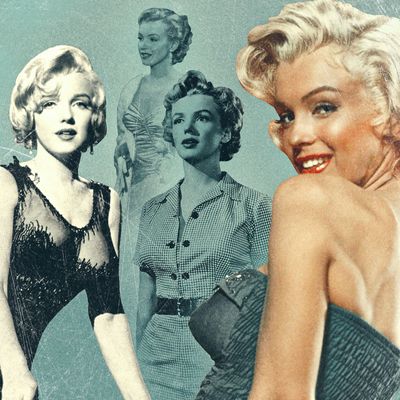
This list was originally published in 2017. We have republished it with Blonde in theaters.
Hollywood has been creating a mythology around blonde bombshells since its beginnings. But no blonde sex symbol has had a deeper and more long-lasting impact on film and American culture than Marilyn Monroe. You probably had an image of Monroe in your mind long before you ever saw her on film. The dumb blonde. The white-hot sex symbol. The foolish girl-woman. The picture of mid-century femininity — wasp-waisted, platinum blonde, and buxom. The tragic victim. These warring images have lasted long after Monroe’s death in 1962 at 36 years old, and they’re easy to twist into caricature. She’s been flattened onto dorm-room posters, mugs, T-shirts, artist renderings. She’s been linked to falsely attributed quotes, conspiracy theories, and lurid rumors. But Monroe was more complex than her legacy suggests, as both an actress and a woman. This ranking of Monroe’s 29 films — based on her performance in each — gives a sense of what a supremely talented comedian and dramatic actress she was, with a keen understanding of the camera that few actors can replicate.
29.
The Fireball (1950)
One important aspect of classic Hollywood’s studio system, which was in its twilight as Monroe rose to stardom, is the sheer breadth of work actors were forced to do by the demanding contracts their studios locked them into. A lot of stars, even the greatest among them, have a lot of minor appearances in forgettable work, particularly at the very beginning of their careers. That’s why it isn’t surprising just how many middling to outright-bad films Monroe appeared very briefly in. The Fireball, starring an exceedingly over-the-top and loudmouth Mickey Rooney as a hot-shot competitive roller-skater, is one of the best examples of this. Monroe appears in two scenes, and not even her natural charm makes it worth watching. Monroe diehards shouldn’t waste their time tracking this down.
28.
Love Happy (1949)
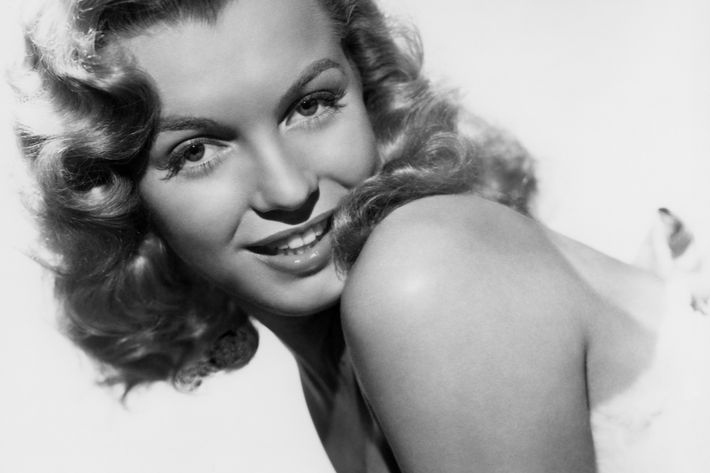
Love Happy is generally (and rightly, I might add) considered the weakest of the Marx Brothers films. Monroe has a tiny walk-on role — she isn’t onscreen long enough to leave much of an impression beyond her beauty. Years later when asked about Monroe, Groucho Marx said of her audition, “The whole room revolved when she walked.”
27.
Right Cross (1950)
Another small, uncredited role for Monroe, this time in a film directed by John Sturges, starring Dick Powell and Ricardo Montalban. Monroe appears for less than a minute as a woman Powell ditches on a date to deal with more pressing matters. It’s such a small role, it doesn’t give her enough time to make an impression. This is one of those roles that’s more notable for offering a glimpse of an unpolished version of Monroe than anything else.
26.
A Ticket to Tomahawk (1950)
Calling Monroe’s role in this ridiculous, chintzy Western small is an understatement. She has one line (“Mhm, honey”) and a song-dance number as part of a traveling group. It’s cute, she looks good, and that’s the extent of its impact. But the song-dance number is adorable enough that this performance edges out her other blink-and-you-miss-it appearances on this list.
25.
Dangerous Years (1947)
Monroe’s first released movie, in which she plays a bit part as a waitress in a restaurant in this emotionally convoluted drama. She’s spunky and fun to watch, but the role doesn’t exactly showcase any of the “It” factor that signaled to audiences they were witnessing a star in the making. Still, it is fascinating as a study of Monroe’s evolution from the fresh-faced, downright adorable girl in Dangerous Years to the pillow-lipped blonde vixen she’d establish herself as later.
24.
Scudda Hoo! Scudda Hay! (1948)
Filmed before Dangerous Years but released after, Monroe’s part is inconsequential, so much so that her role is uncredited. The only reason why this film leaves a mark is that it’s a way to see Monroe when she still used her natural voice.
23.
Let’s Make It Legal (1951)
“Honey, your father’s been so divine with me that sometimes even I feel like calling him daddy!” is an actual line Monroe says in her supporting role as gold-digger Joyce Mannering to the fully grown daughter of Hugh (Macdonald Carey). There’s some interesting talent involved in the film, namely Claudette Colbert and Monroe herself. But the film is definitely below their pay grade. Monroe does her best with the material, and it’s a bigger part than her previous bit roles. That said, I’m not sure it’s worth sitting through.
22.
Let’s Make Love (1960)
There’s no way around it: Let’s Make Love is a mess. The film’s troubled production history is evident onscreen. It’s a shame, since putting together director George Cukor (known for films like The Women and A Star is Born) and Monroe should have been a good pairing, considering how adept he was at charting and respecting the emotional realities of women. Cukor is unenthusiastic about the material, Yves Montand is gravely miscast, the script (which apparently had uncredited help from Monroe’s then-husband Arthur Miller) definitely doesn’t help. To make matters worse, it’s clear Monroe is unengaged in her character — she’s a bit listless, lacking the typical incandescent energy that can easily pull your focus, making this one of the most miscalculated starring roles of her career.
21.
Home Town Story (1951)
Home Town Story is another forgettable, early film that Monroe barely figures into. But she actually makes an impression in her few scenes, giving her secretary character a sharp wit and simmering annoyance whenever men look her way.
20.
As Young As You Feel (1951)
Yes, Monroe plays another supporting role in this film as a not-so-bright secretary who gets caught up in the machinations of others. But her expert comedic timing is on display here. I’m particularly fond of a moment when she sticks her tongue out in innocent annoyance at her boss in one scene. Filmmakers may have underestimated Monroe’s abilities, and her films may have carried a somewhat condescending tone toward her characters, but she brought more to her work than it often deserved.
19.
Love Nest (1951)
Watching Monroe’s career develop, it’s easy to get the distinct feeling that she was the right actress, at the right time, at the wrong studio. Fox obviously realized they had an actress on their hands with that elusive “It” factor, but they didn’t know what to do with it at all. That’s abundantly clear with Love Nest. Monroe plays Roberta “Bobbie” Stevens, an old war buddy of writer Jim Scott (William Lundigan), whose well-meaning but slightly insipid wife grows increasingly jealous now that Bobbie is back in his life. Love Nest falls into a not-so-small category of films in Monroe’s career where she is defined by being an object of lust for men and jealousy for women. It’s a testament to Monroe’s skills that she never becomes a punch line and elevates every scene she appears in, despite the obvious aim of the filmmakers.
18.
We’re Not Married! (1952)
We’re Not Married! is one of those weird classic Hollywood films that makes me wonder about the attitudes and practices of those behind the scenes. Weird isn’t quite the right word, at least when it comes to the segment Monroe appears in in this anthology film about five couples who find out they actually aren’t legally married and the (theoretically) hilarious comedy that ensues. Monroe plays a beauty queen who wins the Mrs. Mississippi pageant, while her husband is pissed that he has to handle domestic duties and take care of their child. Of course, he takes every opportunity to undermine her career, relishing each moment with a disturbing smile. To make matters worse, the filmmakers are thoroughly on his side. Sure, there’s a happy ending eventually, but it’s such a strangely bitter story. Monroe’s actually quite good — luminescent, open — but she’s fighting against a story that doesn’t respect her. Noticing a trend? It’s a problem that snakes through far too much of Monroe’s work.
17.
O. Henry’s Full House (1952)
O. Henry’s Full House is an anthology film curiously narrated by and featuring author John Steinbeck. Monroe plays a prostitute/streetwalker in scenes against the great Charles Laughton. She lends the role a surprising weight and even uses her natural voice, not the breathy and babyish tone she eventually became known for.
16.
Ladies of the Chorus (1948)
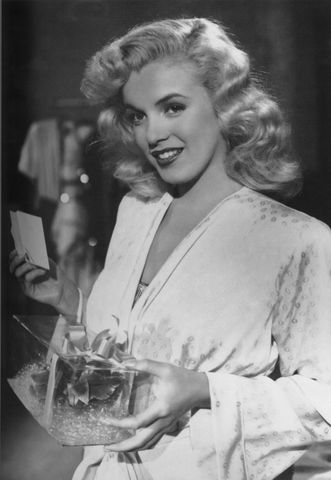
Monroe doesn’t have a lot of range as a singer, but her voice is so distinctive and brims with such personality, you can’t help but warm to it. Her role as Peggy Martin, a burlesque chorus girl who works with her mother, was Monroe’s first major part. It allowed her to sing, dance, and hint at how much wattage could be packed into her smile. She’s a pure confection and dramatically less curated than she’d come to be. It’s definitely a fun, worthwhile performance to track down. Despite her success in the role, Monroe’s contract with Columbia wasn’t renewed, but of course far greater success was to come.
15.
There’s No Business Like Show Business (1954)

There’s No Business Like Show Business typifies a kind of glitzy mid-century comedy-musical that no longer gets made. It’s an ensemble through and through, including heavyweights like Donald O’Connor, who considered this his best work. Monroe understandably balked at having to place her enchanting but not technically proficient skills as a singer-dancer against such legends of the field. Still, there’s something compelling about Monroe that immediately draws your eye. By this point, she had firmly established the baby-voiced, platinum sexpot image that has come to define her image. Monroe is great in the role, bringing a particular blend of sexiness and innocence that is downright spellbinding.
14.
The Asphalt Jungle (1950)
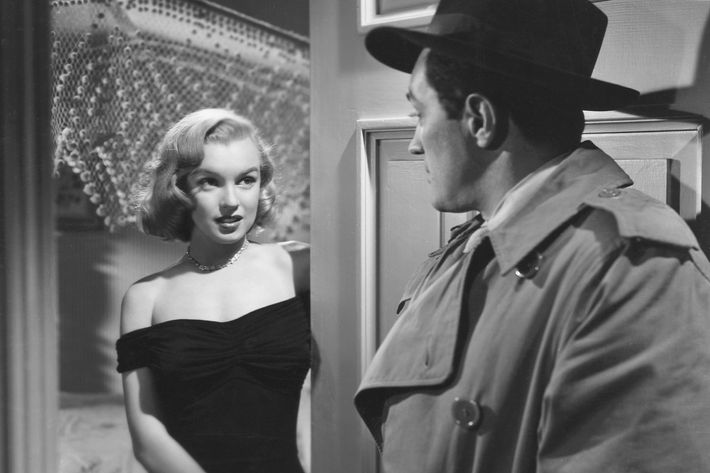
Monroe has, you guessed it, another minor supporting role in this 1950 noir directed by John Huston, as the mistress to Alonzo Emmerich (Louis Calhern). In other hands, this role would be forgettable, but Monroe grants the character a twinge of vulnerability underneath the more obvious sex appeal, making the character distinct enough to stand against men like Sterling Hayden, who have meatier material.
13.
Clash by Night (1952)
Marilyn Monroe has a minor supporting role — although definitely not as fleeting as her early work — in this blistering 1952 domestic noir directed by Fritz Lang. But she makes the most of her scenes, often wrestling the focus away from her more established co-stars whenever she appears. The film revolves around the story of Mae Doyle (Barbara Stanwyck), a former femme fatale of sorts who returns to her fishing-village hometown, becoming embroiled in lust and loss thanks to two very different men who enter her life. Monroe plays the girlfriend of Mae’s younger brother. There is crackling energy in the few scenes Monroe shares with Stanwyck, demonstrating how dramatically different these women are. Monroe’s performance in the film blends the wounded and sweet naïveté qualities that have become her hallmark. In just a few scenes, she leaves her mark.
12.
All About Eve (1950)
At this point on the list, you’re probably wondering how exactly Marilyn Monroe became the classic Hollywood actress who remains most iconic and famous to modern audiences. Was it just the tragic circumstances of her death? Was it that her beauty is so evocative of a time and place that she’s become synonymous with 1950s Hollywood? Definitely not. Monroe was in fact a talented actress, even if she didn’t have faith in her own abilities. She also featured in outright classics that not only represent the height of Hollywood filmmaking, but are some of the most wondrous stories ever told in film. Case in point: All About Eve. The film charts how a young theater upstart (Anne Baxter) insinuates herself into the life of her older idol (Bette Davis) in order to usurp her. Monroe plays Claudia Caswell, a young actress taken under the wing of George Sanders’s devious critic. Her true talents lie not in acting on the stage, but how she acts in real life. This is the earliest and most dynamic example of a specific archetype Monroe perfected: the dumb blonde who is smarter than she first appears. Come for the deliciously sharp bon mots, stay for the actresses, including Monroe.
11.
Monkey Business (1952)
The premise of Monkey Business is fantastical to the point of being ludicrous. Cary Grant plays a chemist who figures out an elixir for youth that makes anyone who drinks it start acting like a daffy adolescent. Once it gets into the water cooler at work, things get weird. It’s obvious director Howard Hawks isn’t too keen on the material, but the scenes between Grant and Monroe sing. She’s hilarious, electric, and quick-witted. It’s a shame that she isn’t the lead here, since her work easily trumps Ginger Rogers’s, who is granted the more important role.
10.
The Seven Year Itch (1955)
The first time writer-director Billy Wilder worked with Marilyn Monroe, he created one of the indelible images of her career that has gone on to be the stuff of legend. Walking out of the theater with Tom Ewell’s Richard Sherman — an executive whose imagination hits overdrive when his family leaves town — Monroe stops atop the subway grates, letting her iconic, cream-colored dress billow around her. She seems utterly naive about her own sexual charge or how Richard leers at her. While the behind-the-scenes images of the shooting of this moment have rightfully become the stuff of legend, the film is exceedingly bitter. She’s not so much a character but an object, to the point where she has no name and is referred to as “The Girl” in the credits. Wilder is often considered cynical, but outside of this film, I’ve usually found him rather realistic and honest about the human condition. Monroe is good though. She’s a ray of sunshine cutting through the fog of the film. She’s bubbly, gorgeous, and captivating. The Seven Year Itch tries to turn Monroe into a punch line, but fails thanks to the strength of her presence, comedic timing, and supernova-bright charisma. In doing so, Monroe reveals herself to not only understand the particulars of comedy in film, but to be a comedic genius.
9.
River of No Return (1954)
The behind-the-scenes turmoil of River of No Return — director Otto Preminger’s issues with Monroe’s acting coach, Robert Mitchum’s drinking, Monroe almost drowning — are all more engaging than the story that ends up onscreen. The film is the picture of politically troubling but visually tantalizing Westerns the 1950s excelled at — its narrative is undercut by immense racism and sexism. But Monroe is a wonder. She also has a great musical number I find irresistible, “File My Claim.” Warm and utterly beguiling, she communicates many emotions — yearning, a touching loneliness, joy, lust — with a single glance.
8.
How to Marry a Millionaire (1953)
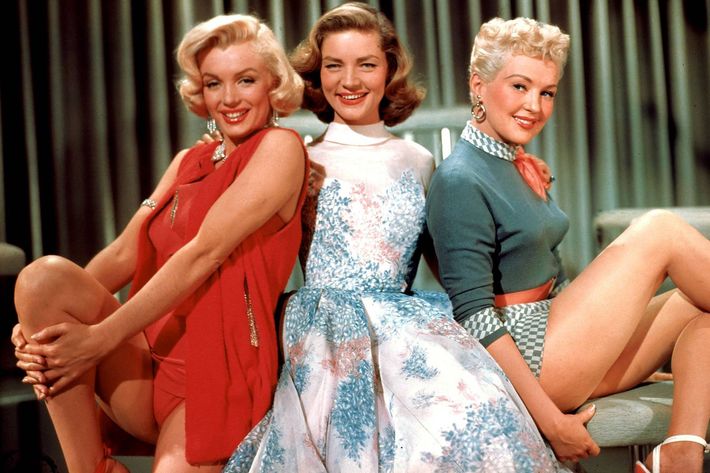
There’s something to be said about a film so overcome with color, New York City iconography, smart editing, and great cast chemistry that you can rewatch it countless times and still feel like you’re watching it anew. How to Marry a Millionaire is not Monroe’s best comedy, but it’s one I find myself revisiting very often. The way Lauren Bacall, Betty Grable, and Monroe play off each other as three best friends trying to manipulate their way into a marriage of riches is exceedingly fun to watch. The film crackles with energy, wit, and heightened humor, which Monroe excels at. Even better, Monroe’s gold digger isn’t condescended to. Her bubbly effervescence and surprising timidity are treated as utterly adorable qualities that the film plays into.
7.
The Prince and the Showgirl (1957)
Years after this film’s tumultuous production, director-producer-star Laurence Olivier said that his co-star was a troubled girl who probably should have stuck to being a model instead of acting. To Olivier, Hollywood dimmed the natural charm Monroe had on camera, making her more fearful than expressive. Olivier may not be wrong about how Monroe was affected by Hollywood’s machinery, but film would be far poorer without her presence. Director Billy Wilder (who worked with Monroe on The Seven Year Itch and Some Like It Hot) once said that Monroe had “flesh impact”: an exceedingly rare quality in which she had “flesh which photographs like flesh. You feel you can reach out and touch it.” That is on full display here. She’s open, vulnerable, and utterly delightful in a way that is hard not to fall in love with. There’s something oddly tangible about Monroe in The Prince and the Showgirl and, despite the period trappings, rather modern too.
6.
Bus Stop (1956)
Monroe had a strange, nearly antagonistic relationship with the camera and the male gaze. Few actors seem to have such an understanding of the camera on a primal level. But Monroe deeply doubted her abilities and intelligence, leading her to take a break from acting in the mid-’50s in order to sharpen her skills at the Actor’s Studio with Lee Strasberg (a.k.a. the architect of American method acting) and his wife, Paula, as her acting coach. I have complicated thoughts about this dynamic, but I’ll stick to discussing the results of their tutelage in Bus Stop. In the film, Monroe stretches her skills, speaking with a Southern twang, wearing exceedingly pale makeup to comment on the nocturnal life of the untalented chanteuse she plays, and fleshing out a complex emotional landscape. There is something haunting about her character. Unfortunately, the film doesn’t examine how the male lead, a socially inept cowboy (Don Murray), is an obsessive stalker rather than a potential romance. In more capable hands this could have been a cutting film, meta-textually even, commenting on how Monroe herself was treated in Hollywood because of her brand of beauty. Instead, her singular performance, which is one of the best of her career, communicates the emotional possibilities the filmmakers couldn’t imagine.
5.
Niagara (1953)
I’ve always felt that Monroe should have done more noirs. Her screen presence naturally blends a vulnerability, sexual charge, and, at times, melancholy that makes her a natural marriage between the more blistering femme fatales and morally upright good girls of the genre. As Rose Loomis, the selfish wife stepping out on her controlling husband, played by Joseph Cotten, Monroe is a marvel. The way she moves expresses intense longing, desire, and a flash of loneliness, which together communicate the reasons why Rose acts the way she does. Niagara also demonstrates how Monroe’s sexiness always had texture to it. In gorgeous Technicolor, the contradictions of Monroe’s screen presence and what made her a great star are on full display. She seduces as much as she draws away from the world.
4.
Don’t Bother to Knock (1952)
Whenever I hear someone disparage Monroe as an actress, I point them in the direction of her seldom-spoken-of but evocative performance in the 1952 noir Don’t Bother to Knock. Monroe plays a mentally ill babysitter caring for the daughter of guests at a New York hotel where all the action takes place. She perfectly renders the emotional unraveling of a woman with seemingly no allies, whose depression tips into suicidal impulses. There is a startling mix of tenderness, luminescent charisma, and fragility that defines Monroe’s performance in Don’t Bother to Knock. Each time I watch it, I feel like I find something new to admire about her work. The film itself doesn’t live up to her performance, but she has a gravitas here that she seldom got to express elsewhere, an avenue I wish she had the opportunity to travel more in her career.
3.
The Misfits (1961)
For many actors whose onscreen work has become the stuff of legend, you can point to a type, a specific skill set, or a style they cleverly excelled at. For me, Monroe is evocative more of a mood and a time than just the dumb blonde sexpot she’s become known for. Through this lens, her startling, heartfelt, gorgeous work in The Misfits, the last film before her death, feels strangely like an elegy for the “dumb blonde” she never truly was, and the Hollywood she existed within. The film was directed by John Huston and written by Monroe’s then-husband Arthur Miller. It centers on Monroe as a recent divorcée who spends time with an aging cowboy (Clark Gable in his final film) and his friend (Montgomery Clift). Monroe’s work with the other actors creates a portrait of the ways people yearn. It’s powerful work. The photography Eve Arnold shot on set, along with the film itself, captures what draws me to Monroe, and why this performance shows how much more she had to offer — she explores and brings to life the cloying weight of loneliness the way few actors can.
2.
Some Like It Hot (1959)
Some Like It Hot is one of the few films I’d call perfect. It’s firing on all cylinders — sharp direction, expert cinematography, crackling cast chemistry. I have seen the film so many times I’ve lost track, and each time I discover something new to love, especially when it comes to Monroe’s performance as Sugar “Kane” Kowalczyk, a ukulele player and singer who gets swept up with two men pretending to be women (played with comedic ingenuity by Jack Lemmon and Tony Curtis) in order to hide out from a mob boss whose hit they witnessed back in Chicago. The 1929 setting makes this an obvious riff on the Valentine’s Day Massacre. Who knew murder could bring such hilarity?
Some Like It Hot has everything I love about Monroe, and film itself, really — it spotlights her entrancing charisma, sensuality, melancholic undertow, and beguiling physicality, which is an unparalleled concoction of sensuality and nervous vulnerability. The blonde bombshells to come in her wake often mimicked the sexuality part, heightening it to ridiculous levels, but missed these other attributes that made Monroe feel startlingly real, not just a studio product to be packaged and sold.
1.
Gentlemen Prefer Blondes (1953)
No one can watch Gentlemen Prefer Blondes and still make the claim that Monroe’s draw was only photographic. If she’d stuck to being a model, she wouldn’t be half the legend she is today. That’s because the gravitational pull of her charisma is most evident when she’s in motion, like the song-dance numbers “Two Girls From Little Rock” and the iconic “Diamonds Are a Girl’s Best Friend.” As Truman Capote once wrote of Monroe, “What she has […] could never surface on the stage. It’s so fragile and subtle, it can only be caught by the camera.” Howard Hawks creates a film that sparkles with energy and brims with hilarity. It follows Lorelei Lee (Monroe) and Dorothy Shaw (Jane Russell), two best friends and American showgirls whose lives go haywire when Lorelei’s potential future father-in-law hires a detective to track her, believing her to be an unrepentant gold digger. Jane Russell and Marilyn Monroe are a study in contrasts that perfectly complement each other. Russell is the cynical, sharp-tongued half. Monroe is bubbly, passionate, and utterly obsessed with diamonds. Her grace, comedic timing, and kinetic chemistry with Russell make this her best and most delightful performance. While her legend may not reckon with her skill, all you have to do is fire up this film to witness firsthand what it means to be truly starstruck.


